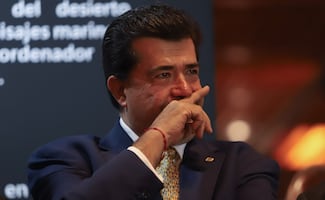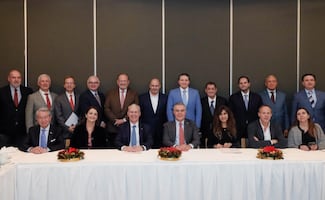For many Mexicans, museums are major destinations when they travel to Europe , even though they have never felt attracted by local cultural heritage .
“ He who knows his village knows the universe .” Perhaps this phrase by Russian novelist Leo Tolstoy describes European feeling, but not for this side of the world.
As in the rest o f Latin America , a good part of museums in Mexico, both of art and history, are going through a critical situation , up to the point that in our country there are several compounds focused on history that have not received a single visitor in years.
The reasons are many, but experts highlight the gradual reduction of budget for operation, promotion, preservation, and restoration of museums, progress in technology, the lack of interest , problems with insecurity , and the lack of connectivity .
Mexico has 162 museums open to the public under the care of the National Institute of Anthropology and History (INAH) , venues that narrate national or state history, or that reinforce knowledge about a relevant locality, historical or archeological site.
Nevertheless, authorities reported eight historical museums that received no visitors from January to May 2019.
In a house inhabited during 11 years by Don Miguel Hidalgo y Costilla , the Museum of “Small France” registered no visits despite being a space that informs about the life of Mexico’s founding father in Guanajuato.
The ideology of the museum is though within the history of Mexico’s Independence , with a division in five axes : The foundation of San Felipe (nowadays Ciudad González), back in 1552; the arrival and stay of Hidalgo in the place; the search for a future in El Bajío; the Small France; and theater and music that were the passion of the priest.
Another house that was inhabited by a hero of the Independence is the Historical Museum of Eastern Morelos , “Casa Morelos,” a space that has not received visitors this year either.
The museum is made of eight permanent showrooms that focus on the life of José María Morelos y Pavón , his meeting with Hidalgo, and his principles as a strategist.
The Museum of Subaquatic Archeology , located in Campeche , also suffered from abandonment in the first five months of this year, according to information of the INAH.
With a mostly pre-Hispanic collection , the compound is made up of two unique collections in their genre in the whole Mayan area: one consists of jadeite funeral masks from the tombs of the Divine Lords of Calakmul, and the other of funeral figurines of the Jaina island.
Located at the center of Veracruz is the Bastion Museum of Santiago , which has not received visitors this year either.
The place exhibits “The Fisher’s Jewels,” an archeological collection made up of 42 pre-Columbian gold pieces and bars , which were confiscated from a fisher that found them at the bottom of the sea.
The Archeological Museum of Soconusco , in Chiapas , shows monoliths and steles of the archeological site Izapa , an important civic and religious center built 1,500 years before Christ; but the pieces have received no visitors during the year.
The architecture of the museum shows a strong influence of Art Decó , whose subject matter is divided into five rooms: Steles, First settlers or Moyaks, Olmec, Izapaca, and Mexica.
In Merida’s Pinacotheca “Juan Gamboa Guzmán” no visit is registered since the beginning of the year, even though it hosts pieces from the Viceroyalty and the 19th Century in Yucatán, that come, mostly, from the now disappeared Historical and Archeological Museum of the state , with a collection that goes from viceregal to modern authors.
INAH reports two other museums with no visitors this year, both located in Huaquechula, Puebla . They are the former Convent of St. Francis and the House of the Palestinian , whose structures were damaged during the September 2017 earthquakes .
The expert in tourism by the Ibero-American University , Gerardo Herrera , says that museums, like any other product, must be promoted.
“ If you don’t show, you don’t sell . If this applies to beach resorts, it must apply to for museums,” he thinks.
He explains that culture is very hard to sell in Mexico , but it would not be difficult to offer it to foreigners, particularly Europeans, because many of them like culture, but they need to know about the existence of museums through dissemination and promotion . “We are not taking advantage of a huge opportunity, because museums can attract more sophisticated and educated tourists , instead of spring breakers
For Gerardo Herrera, governments in Mexico have abandoned cultural policies for decades, but he trusts the new federal administration, which says to have more social sense , to implement policies that not only rescue but promote museums.
mp
Noticias según tus intereses
[Publicidad]
[Publicidad]

















